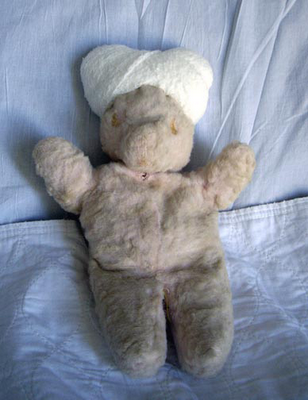If you were only allowed to take one object, what would it be? We’ve all heard this common interview question, often placed within an invented extreme situation: In a fire? On a deserted island? On a deathbed? Sometimes people’s choice is pragmatic (a powerbook), sometimes – peculiar and personal (an old photo album), yet the question itself is so reassuringly hypothetical that no one thinks of taking it seriously.
That is until a disaster strikes.
My friend and colleague Larry, an athletic, ironic, and carefree 45-year-old, has recently complained to his doctor about strange hearing problem in one of his ears. The scan revealed a golf ball-size tumor in his brain. A complex operation was scheduled soon thereafter. What went through Larry’s head in the days and hours before the surgery? Let him speak for himself:
“I was so adamant to have my Teddy Bear laying on the operating table with me, because my grandmother gave it to me when I was 4 years old, the only prior time I ever was in the hospital…In all the places I have traveled and lived, I have always had it with me. When I was just coming to out of surgery, I remember one surgeon held up my Teddy Bear and said, “Your bear says it's time to wake up." I remember sort of seeing that its head was bandaged, and when in the ICU recovery room, I was clear enough to notice that the surgeons took the time and care to wrap its head, as mine was. This was such an endearing detail, which reinforced that on so many levels my surgeons and their team understood every detail, especially their patient.”
How to separate play from seriousness in this metonymic belief, shared by the doctors and patient alike? They all understood the power of an inanimate object to contain our memories, emotions, and beliefs, an object made indispensable precisely because of its lack of any practical purpose.
